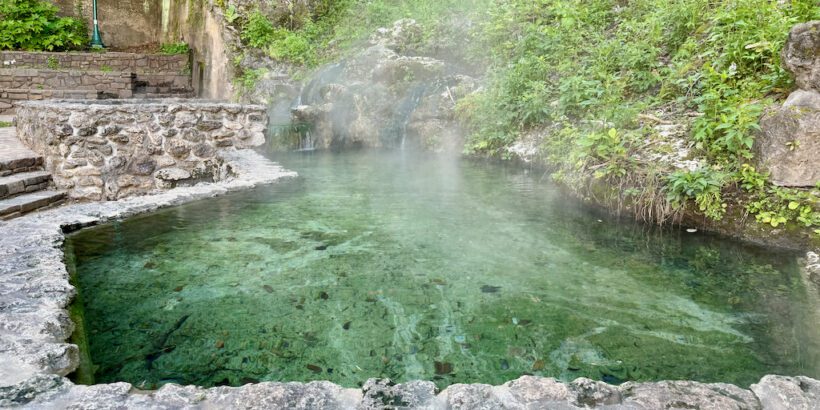If you are headed to Hot Springs National Park in Arkansas, chances are that you want to experience the wonderfully historic and therapeutic waters of the hot springs.
But there are some things that you need to know before you visit, as the experience is not quite what many people expect.
And in this article, I will break down everything for you.
Let’s get straight to it.
Table of Contents
Key takeaways
- No Natural Hot Springs: There are no natural hot springs accessible in the surrounding wilderness or national park. To experience the hot springs, visitors need to explore specific locations outlined below.
- Touching Hot Springs: Experience the hot springs by viewing/touching the hot water at locations such as the Hot Water Cascade and display springs.
- Drinking Hot Springs Water: Use designated drinking water stations to fill up bottles or jugs, as the water doesn’t require filtration or treatment.
- Buckstaff Bath House (1912): Offers a traditional bathing ritual including mineral-rich baths and massages, with nudity involved.
- Quapaw (1922): Provides modern amenities and communal bath areas with varying temperatures.
- Arlington Hotel and Spa (1925): Offers a traditional experience with reservations and emphasizes modesty.
- Hale Hotel (1892): Provides baths with mineral water for privacy and luxury.
There are no hot springs located in nature
It’s important to note that there are no natural hot springs accessible in the surrounding wilderness. You won’t stumble upon them while hiking along the trails within the national park and you can’t just trek into the woods for a dip in the hot springs.
To experience the hot springs, you’ll need to explore the options I’ll outline below.
This is a bummer for some people but it does make sense when you consider that the water comes out of the earth at around 145°F. So even if they were not re-routing the waters, I don’t know how practical a hot spring experience in nature would’ve been here.
With that out of the way, here are six ways to experience the hot spring water.

#1. Touching the water at an open hot spring
The first way to experience the hot springs is to simply touch the hot water and see just how hot it really is.
And there are a few different places where you can do this.
First, there is the Hot Water Cascade, which is located on the north side of Central Avenue, just across from the Arlington Hotel and Spa.
This is a beautiful hot water cascade where the hot spring water pours in from the hillside, and it’s incredibly scenic, especially if you visit whenever it is cooler, and there is a lot of steam radiating from the pool.
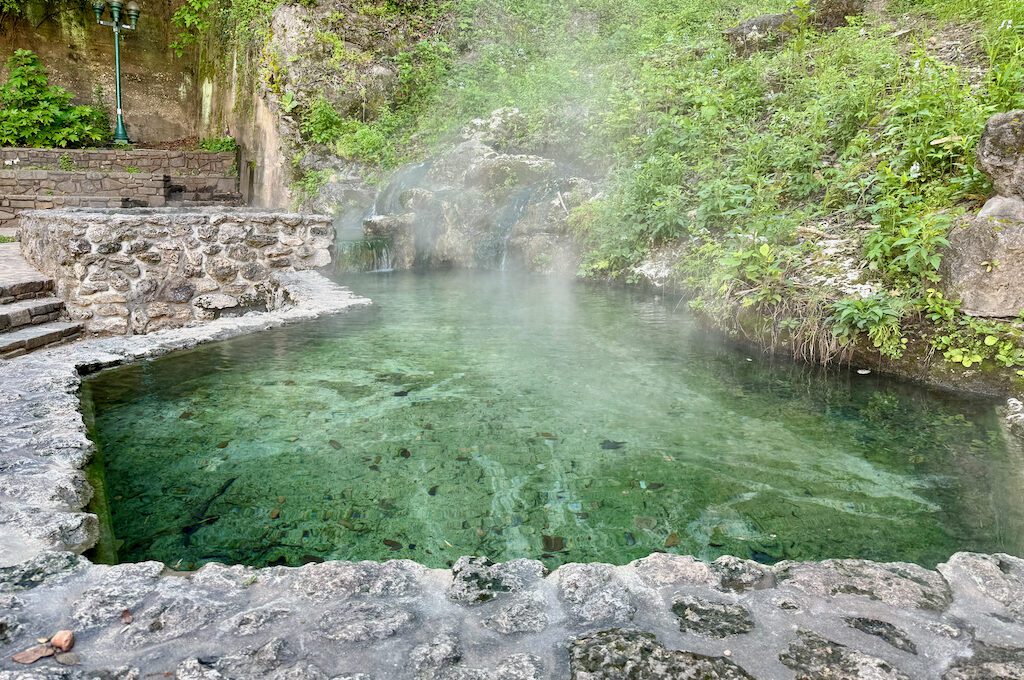
As you amble along The Grand Promenade, the elevated paved path behind the bathhouses, you’ll catch sight of a couple more open springs. (I highly recommend taking a leisurely stroll here.)

Additionally, behind the Maurice building, you’ll encounter the display springs, offering another picturesque area to explore. Take advantage of the benches scattered around, providing the perfect spot to unwind and bask in the soothing ambiance as you listen to the gentle flow of hot water.
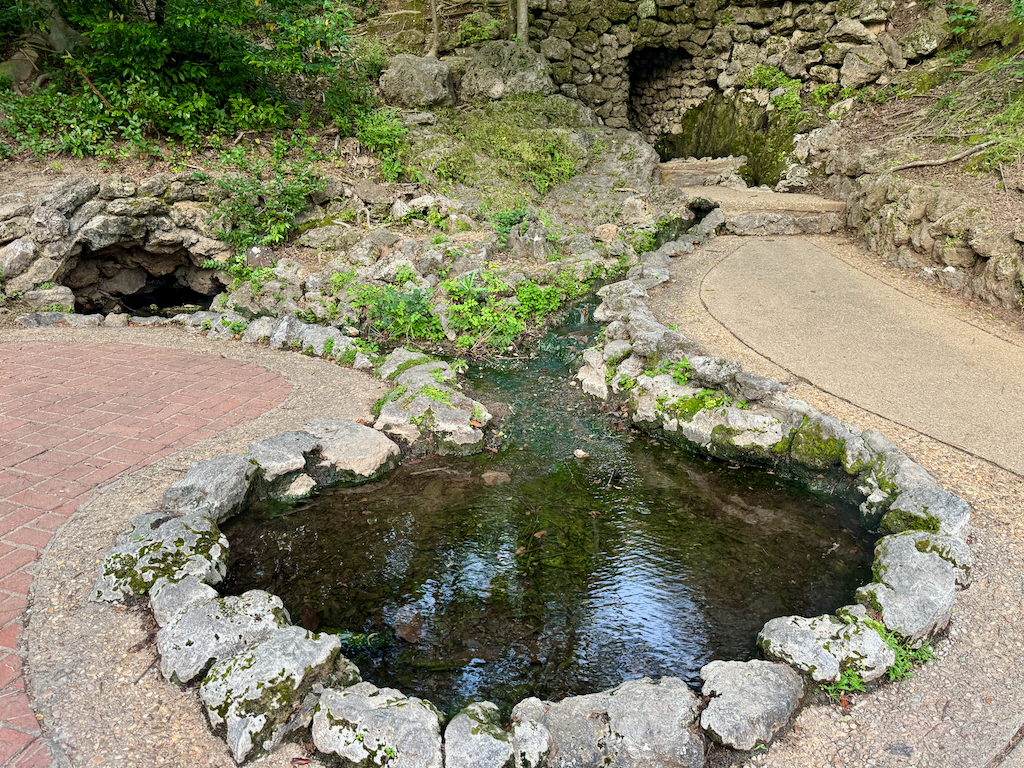
#2. Drinking the water from a fountain
There are several hot springs fountains situated around Bathhouse Row. The steam is usually the dead giveaway that it’s not a cold fountain.
Between the Fordyce and the Maurice bath houses, which mark the old entrance to the park, you’ll encounter three fountains. Two of these fountains flank the walkway, while another is situated towards the rear (seen below).
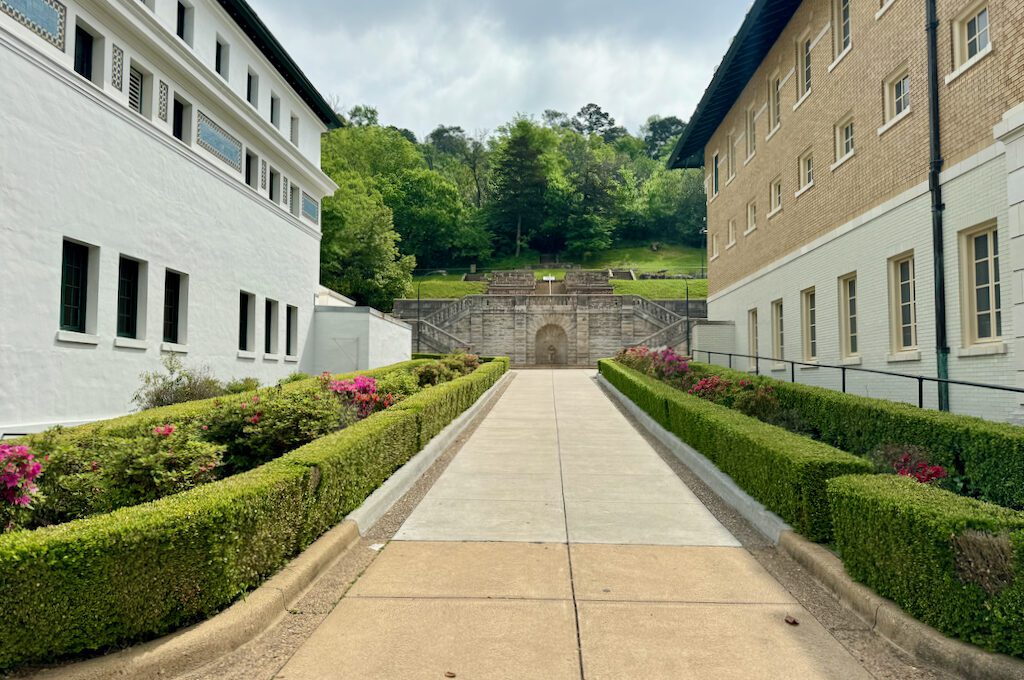
Furthermore, on the south side of Bathhouse Row, near the park administration building, you’ll also discover some fountains.
For me, I prefer not to drink or collect water from these historic fountains. They are beautiful — I just don’t fully trust the pipes feeding them water.
Instead, I utilize the designated drinking water stations available for filling up. One of these is by the NPS Administration building, and another one is near the city’s visitor center, next to EV parking.
These stations are free and effortless to use – just press the button, and a generous flow of water is at your disposal. You’ll often see other people, including many locals, filling up lots of jugs when you visit.

The water from these stations doesn’t require filtration or treatment because it’s already been naturally purified by the high temperatures of the springs, making it safe to drink.
Speaking from my own experience, I must say I thoroughly enjoy this water. During our visit, we made it a ritual to fill our jugs every day or every other day. We mainly used it to craft sparkling water, which was a daily highlight to our stay.
Visit a historic bath house
Apart from merely touching or sipping the rejuvenating waters, another immensely popular way to immerse yourself in the experience is by visiting a bathhouse.
With several options available, I personally explored three distinct bathhouses and can provide insights into what each offers.
#3. Buckstaff Bath House (1912)
Among them is the renowned Buckstaff Bath House, distinguished as the oldest continually operating establishment on Bathhouse Row. At Buckstaff Bath House, you’ll delve into a time-honored bathing ritual that has persisted for over a century.
During your visit, you’ll follow a structured journey through various stations, which may include a whirlpool mineral-rich bath, a needle shower, a steam cabinet, and a relaxation area where heated towels are draped over you. Feel free to add on a massage if you’d like.
It’s important to note that this experience typically involves complete nudity, as you move through the stations alongside other guests. Consequently, it may not be suitable for everyone.
The main challenge with Buckstaff Bath House is that they operate on a first-come, first-served basis and do not accept reservations. Therefore, it’s essential to arrive early (an hour or so) to secure your spot and come with a book or something to listen to while you pass the time. The standard traditional experience is about $40 per person.
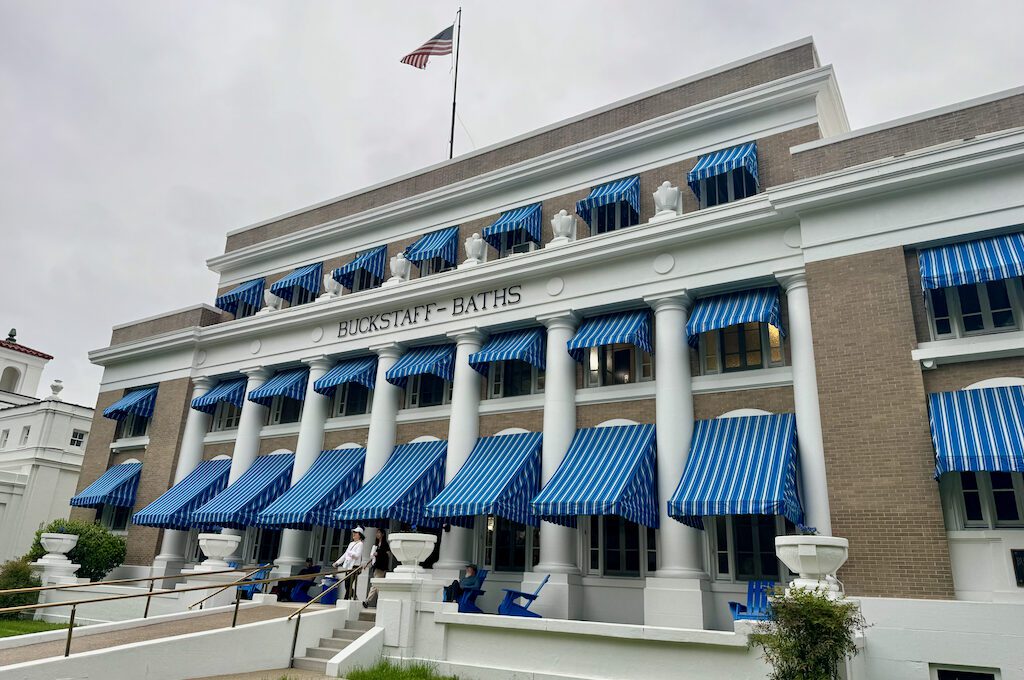
#4. Quapaw (1922)
Another notable bathhouse is the Quapaw, offering a more contemporary spa experience.
At Quapaw, you’ll find modern amenities including options for facials and various spa services. They also offer private baths, but one of their highlights is the communal bath area. Here, you’ll find four different pools set at varying temperatures. Guests typically spend around ten to fifteen minutes at each pool, moving between them for a unique hydrotherapy experience. Entry was $25 per person.
Unlike the traditional bathhouse setup, Quapaw’s communal baths don’t require you to move between stations or disrobe. However, due to its communal nature, the atmosphere can get lively and crowded, potentially detracting from the overall relaxation.
While personal preferences may vary, I found Buckstaff Bath House to be more to my liking compared to Quapaw. Ultimately, your choice between the two will depend on your individual preferences and priorities.
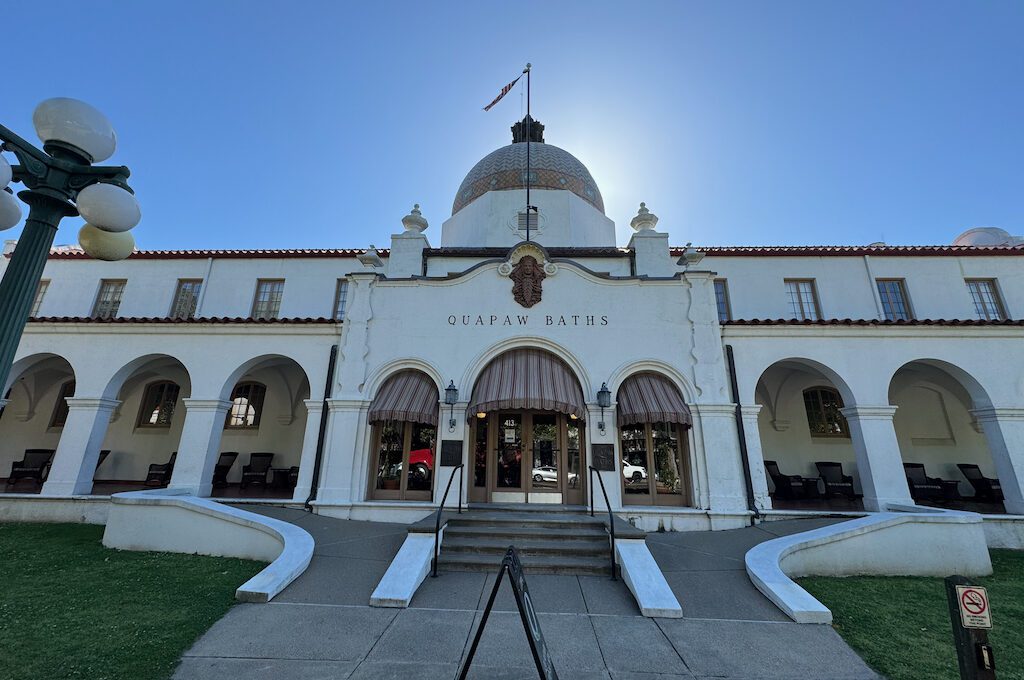
#5. Arlington Hotel and Spa (1925)
Another notable option is located within the Arlington Hotel and Spa. This establishment offers the convenience of reservations, providing a somewhat traditional experience akin to the Buckstaff, albeit with fewer stations.
During my visit, we indulged in the whirpool bath and a dry sauna, complemented by the comforting touch of hot towels. What set Arlington apart was their emphasis on modesty; while guests are still nude, they provide robes for added coverage throughout the session.
If you’re seeking a traditional experience steeped in history, with famous figures like Al Capone and Babe Ruth having frequented the same bathhouse, but prefer a more modest approach, the Arlington Hotel is an excellent choice. The traditional experience is about $45 per person.

#6. Hale Hotel (1892)
Finally, you could also book a stay at the Hale Hotel, as all of the baths in those hotel rooms get the mineral water directly sent to them. That gives you the ability to bathe in complete privacy with no reservations or waiting needed. It’s also the oldest building on Bathhouse Row. It’s a luxury boutique hotel so room rates start at around $250 to $300.
Daniel Gillaspia is the Founder of UponArriving.com and the credit card app, WalletFlo. He is a former attorney turned travel expert covering destinations along with TSA, airline, and hotel policies. Since 2014, his content has been featured in publications such as National Geographic, Smithsonian Magazine, and CNBC. Read my bio.

